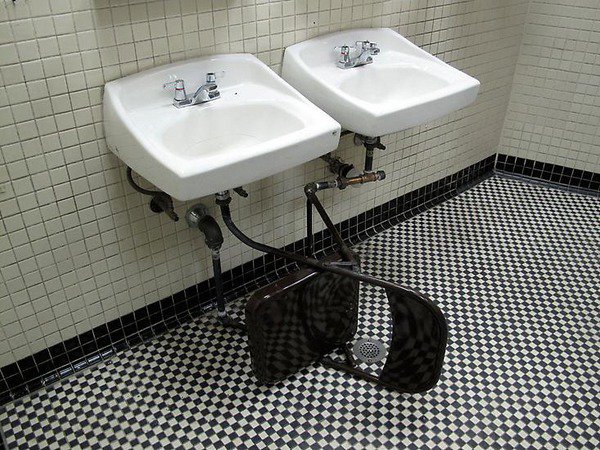Shadi Habib Allah
dal 17/3/2013 al 4/5/2013
Segnalato da
17/3/2013
Shadi Habib Allah
Green Art Gallery, Dubai
Allahhs practice traverses installation, video and sculpture, in order to examine the structural and material operations of circulations of objects, people, histories and the economy.

Green Art Gallery is pleased to announce Palestinian artist Shadi Habib Allah's first solo show in the Gallery, following his presentation at Art Statements, Art Basel 43 last year.
Habib Allah's practice traverses installation, video and sculpture, in order to examine the structural and material operations of circulations of objects, people, histories and the economy. While each project defines its own terms and the necessary means of engagement he reworks existing structures or makes images of images in ways that eventually erase or replace the original, until it is unclear what is original and what is the copy. Anecdotes with an air of humor function as a pretext for more complex topics and critical positions. His practice is not about the object or the artifact itself. It is about the reconstruction or subversion of existing objects, and in this way questions received ideas of use and value and the structures that hold them in place.
For the new body of work Habib Allah continues his exploration of reconstruction and subjective interpretation through a personal anecdote. In 2009, the artist was traveling to New York with a sculpture cast of a leg he had made in Palestine. Upon arrival at Ben Gurion airport in Tel Aviv, Habib Allah was interrogated about the use and meaning of the sculptural work. After being passed up the chain of security and responding to a myriad of questions, the artist was separated from the work and the sculpture was stripped of its recognition as an artwork, eventually being destroyed without the artist's knowledge. An institutional aesthetic judgement that had unforeseen consequences.
The large-scale drawings featured in the exhibition follow a process of alternative mnemonic representation in order to create images of the room where the destruction of the sculpture occurred, a place that the artist has never witnessed. Instead, the creation of the drawings relied on a different circulation of memory: a security guard working at the airport who was asked by the artist to gain entry to the restricted room where the destruction of the work occurred. After a number of months the guard was able to slip into the space, and proceeded to parlay a description to a police sketch artist, who then made detailed views of the restricted space based on the oral testimony. Three large-scale drawings depict the room at a 1 to 1 scale, encompassing the gallery and immersing the viewer in a living memory.
The images in their production rely on memory of a storytelling for their reconstruction. The various elements of the work meet in a complex space that exists between the images and the minimal narrative in the accompanying video, which parlays the affective experience through the artist's account of the incident. The drawings operate through a process of abstracting experience, utilizing different vehicles—the airport security guard and the interpretation of the police sketch artist—their subjective capacity in reconstructing the scene of censorship playing an essential role in conflating a dominant narrative of representation. Instead each process: from the work's destruction through to the illicit entry of the guard, constitutes a contestation of the extrajudicial wreckage. Each transmission of experience dilutes the narrative until the authority is completely emptied out of the work, leaving only the bare elements of the room, reconstituted in the monumental drawings. This empty stage is inhabited only by props and puts forth the potential for a new scene to unfold, one in which positions are reconfigured and a different narrative can emerge.
About Shadi Habib Allah
Shadi Habib Allah (b.1977, Jerusalem) received a BFA from Bezalel Academy of Arts and Design in 2003 and an MFA from Columbia University in 2010. He was recently nominated for the Luma Award (2011) and was also the 2012 recipient of the Louis Comfort Tiffany Award. He held his first solo exhibition in New York at Reena Spaulings in 2010. His work has been exhibited at the Riwaq Biennale, Ramallah; Tate Modern, London; Palestine c/o Venice at the Venice Biennale and Art Statements, and Art Basel 43 amongst others. Recent and upcoming exhibitions in 2013 include Frozen Lakes at Artists Space, New York and Empire State, curated by Norman Rosenthal & Alex Gartenfeld, at the Palazzo delle Esposizioni, Rome. He lives and works in New York.
Opening: 18 March, 6–9pm
Green Art Gallery
Al Quoz 1, Street 8, AlSerkal Avenue, Unit 28 Dubai
Admission free



